FEBRUARY 4, 2024: Woke up to a beautiful sunny day in Anthony, Texas. After the usual morning routine, we drove to the city of Las Cruces, located about an hour north of El Paso. Las Cruces is the 2nd largest city in New Mexico. No one knows exactly how Las Cruces, meaning “the crosses” in Spanish, got its name, but some have guessed that the name comes from the crosses that marked the graves of several of the early pioneers who were buried there.

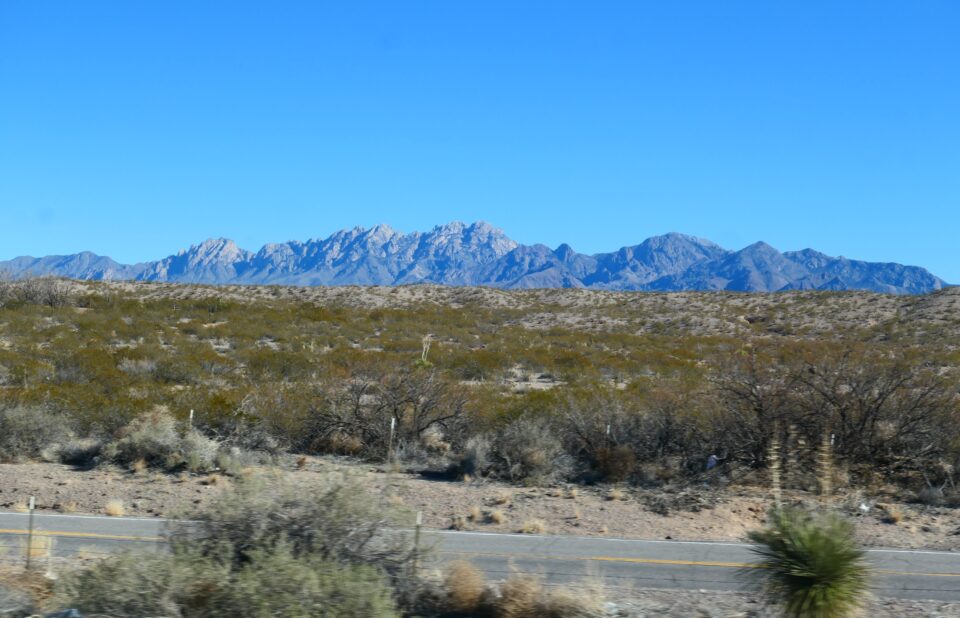
In the 1840s and 1850s, the first Jewish immigrants arrived in Las Cruces, establishing themselves as merchants. Afterwards, they branched out into other occupations: ranching, mining, law, politics and banking. In 1879, when the railroad arrived in New Mexico, a new influx of Jewish immigrants, mostly with European origins arrived. The first synagogue in Las Cruces was constructed in 1898. As we saw over and over again in the southwest USA communities we visited, the Jews were not only economically successful, but also were very involved in civic matters and held positions of social leadership.
Our first stop in Las Cruces was the Masonic cemetery This cemetery was founded in the late 1800’s and opened to public burials in 1921. A Masonic cemetery is where Freemasons are buried – Freemasons are members of an international order established for mutual help and fellowship. They are the oldest fraternal organization in the world, beginning during the Middle Ages in Europe as a guild of skilled builders. When searching for Jewish cemeteries, we sometimes would see a Masonic cemetery in the distance and think it might be a Jewish one. This happened because Masonic cemeteries, like Jewish cemeteries, do not have crosses. Only when got up close and looked at the names and images on the tombstones, did we realize we are in the wrong place.
Here in the Las Cruces Masonic cemetery, there was no separate, fenced off area for the Jewish burials. Instead, we saw several areas that had clusters of Jewish graves. Masons welcomed Jewish pioneers into their lodges throughout New Mexico. Many of the Jewish pioneers were dedicated lifelong Masons and very involved in the Freemason organization. Here in Las Cruces, some of the Jewish tombstones had both the Jewish Star and the Masonic symbol (a square and a compass with the letter G in the middle).
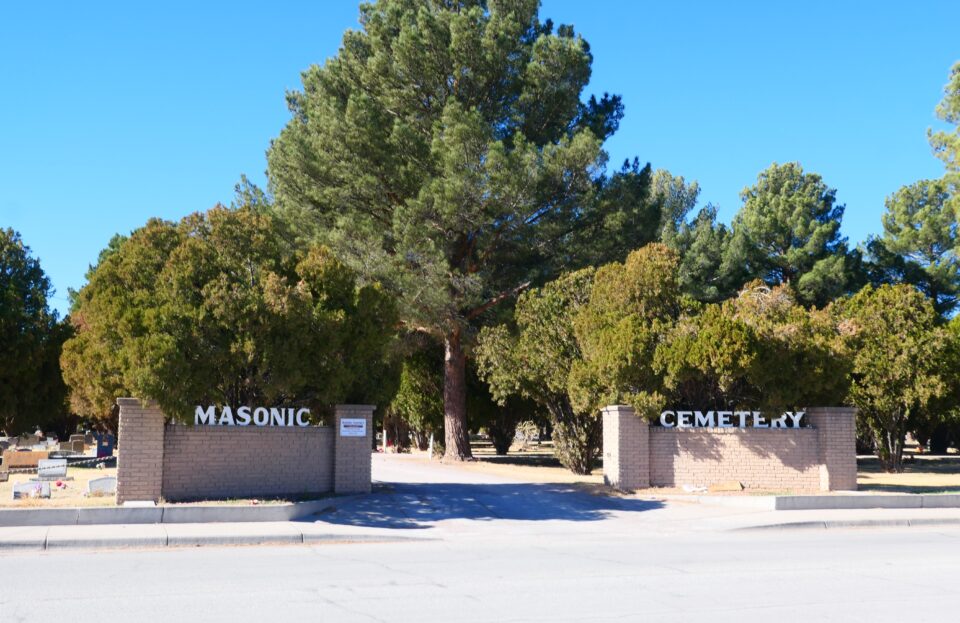
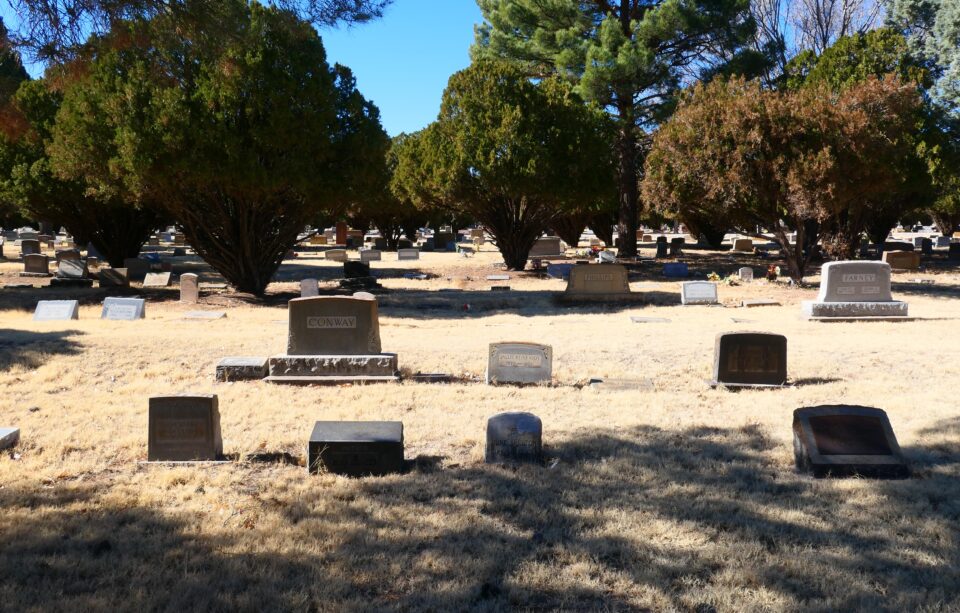

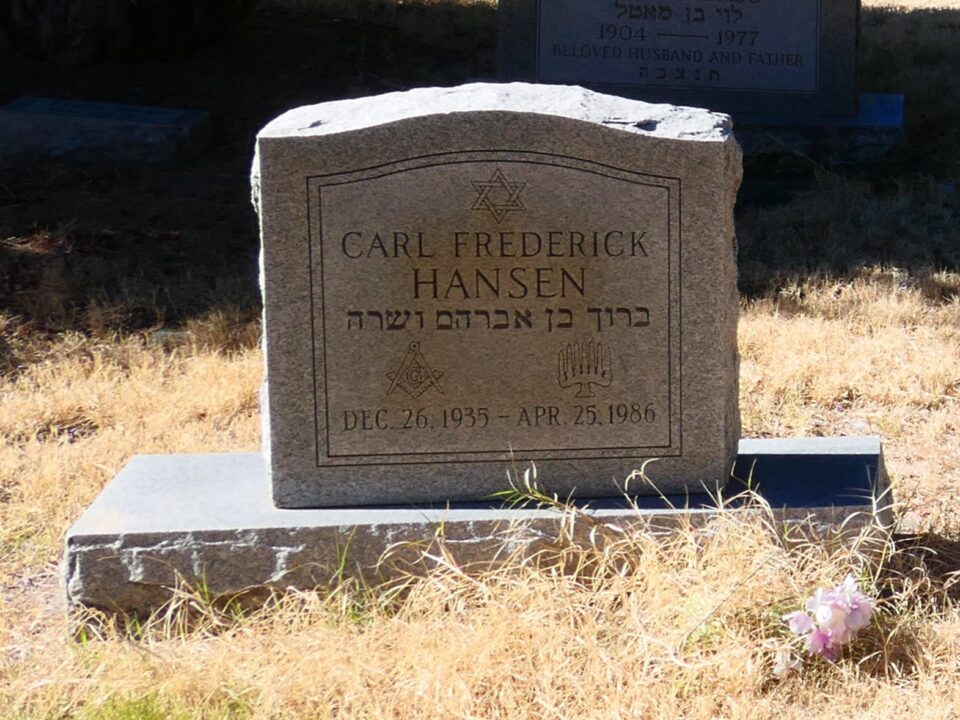
After visiting the cemetery, we drove across the city to Temple Beth El. The cemetery is in the older, western side of the city and Temple Beth El is all the way on the eastern side, in an attractive, new suburb. Unlike our experience with Temple Mount Sinai in El Paso on Friday, here they were very welcoming. We were invited in and taken to meet with Rabbi Evette Lutman, the temple’s first female rabbi. She took time off from her busy schedule to sit with us and answer our questions about the temple and the community.
Today the congregation has about 135 members and is growing because of the influx of retirees to the area – Las Cruces is beautiful, the weather is good and the cost of living is cheap. The temple officially belongs to the Reform movement, but the congregants have a wide spectrum of observance. She herself previously worked as a reconstructionist rabbi. They keep the temple meat free, and the kitchen is dairy only, but the dairy is not checked for kashrut – it is kosher style. On Sundays, there are Jewish education classes for children. The rabbi gives adult education classes during the week. Much seemed to be going on while we were there – there were many cars in the parking lot and several different activities taking place in various areas of the building. Before we left, the rabbi showed us the holocaust memorial they created outside their building.
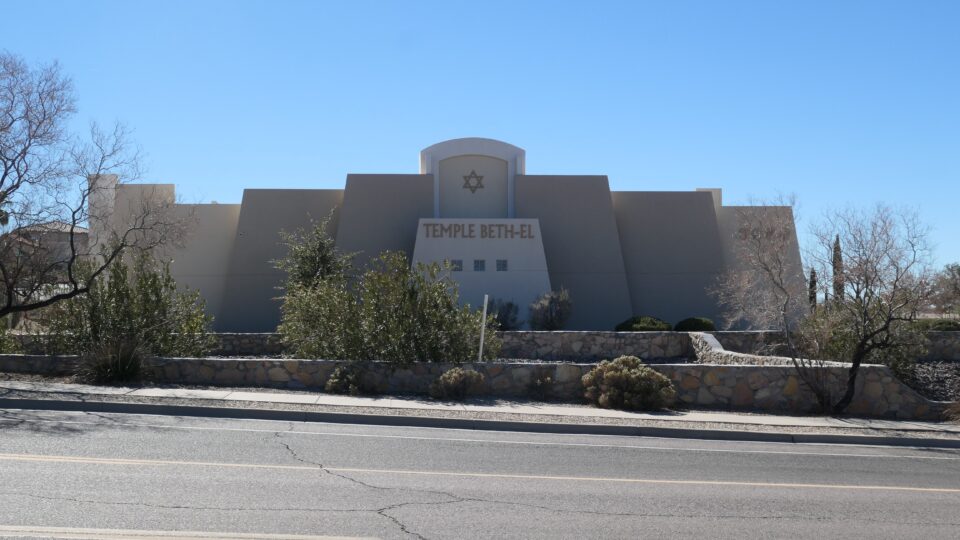
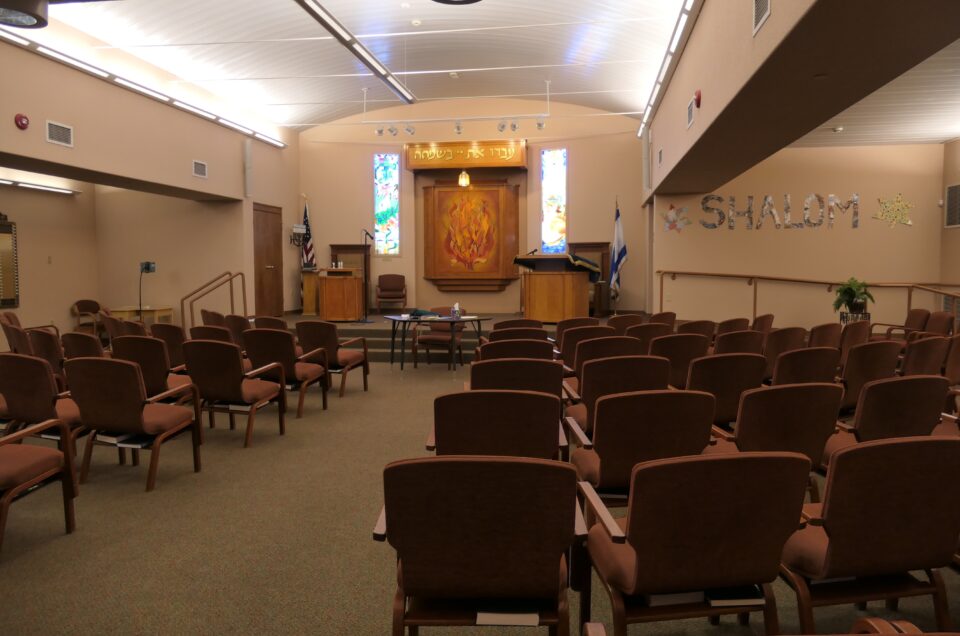
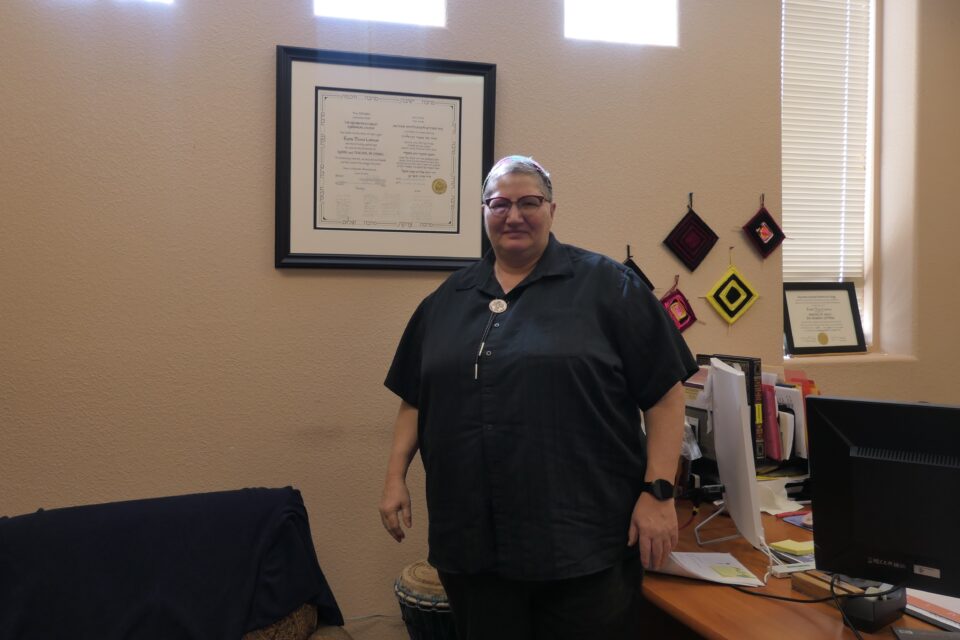
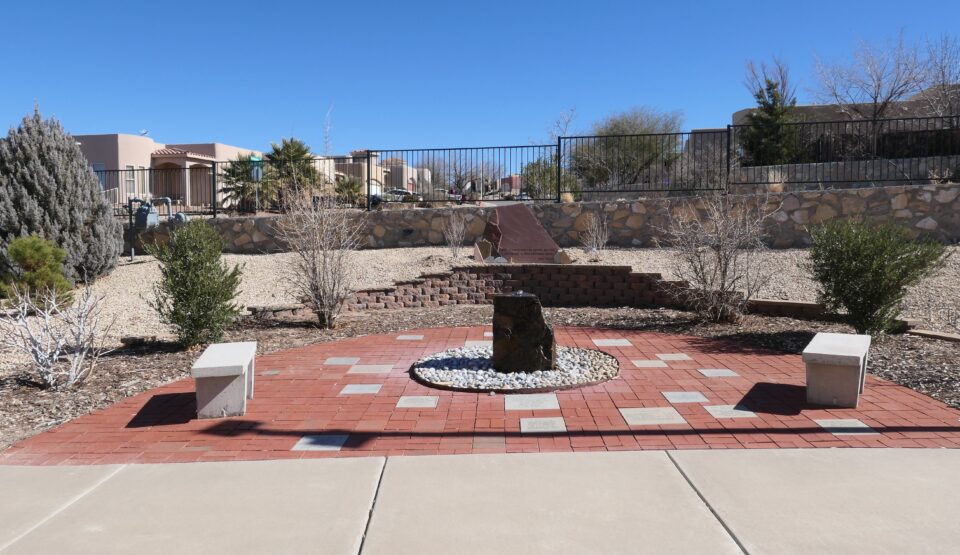
After this uplifting visit (it was nice to see a vibrant, growing center of Jewishness), we began our drive to White Sands National Park. However, before leaving Las Cruces, we needed to fill up with gas. Here we paid $2.69 for a gallon, compared to $4.59 that we paid in California. This too was uplifting.

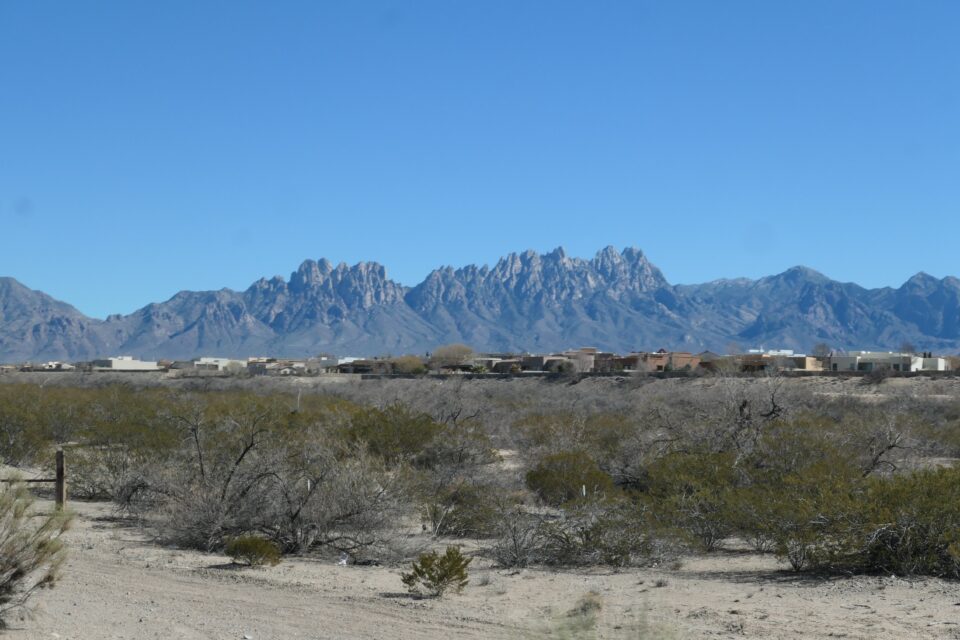
To reach the White Sands National Park, you drive through the White Sands Missile Range, a United States military testing area and firing range. When testing is taking place, the road closes for several hours, and then the park is not accessible from this direction. You need to check the park website to verify that the road is open. Being Sunday, no testing was taking place, and we could drive through the very large, flat area to reach the National Park.
The White Sands Missile Range was created in 1945 and soon afterwards, the testing of the first atomic bomb took place at the Trinity site in the range. The range is huge – over 3,400 square miles, about the size of Rhode Island. From where we crossed into the range, we needed to drive over 35 miles to reach the visitor center of the national park, which sits within the range.
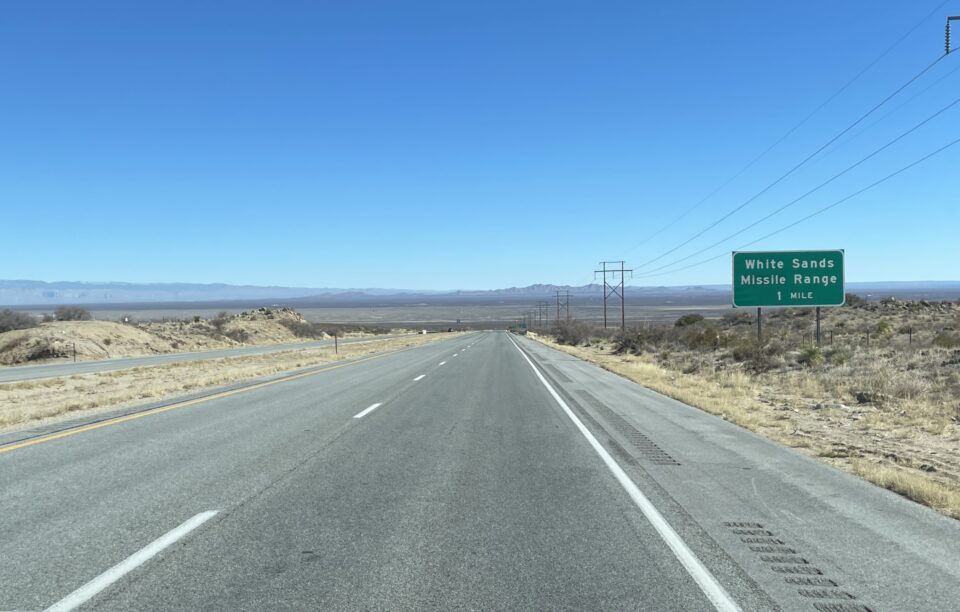

The White Sands area was declared a National Monument in 1933 by Herbert Hoover, and in 2020 White Sands National Monument was redesignated as White Sands National Park by Donald Trump. Much of the signage still says National Monument instead of National Park. We finally arrived at the visitor center, and after getting a map of the park, we drove to the entrance gate and waited in a long line of vehicles to enter. In front of us was a trailer with horses – there is even a section of the national park specifically for riding horses.
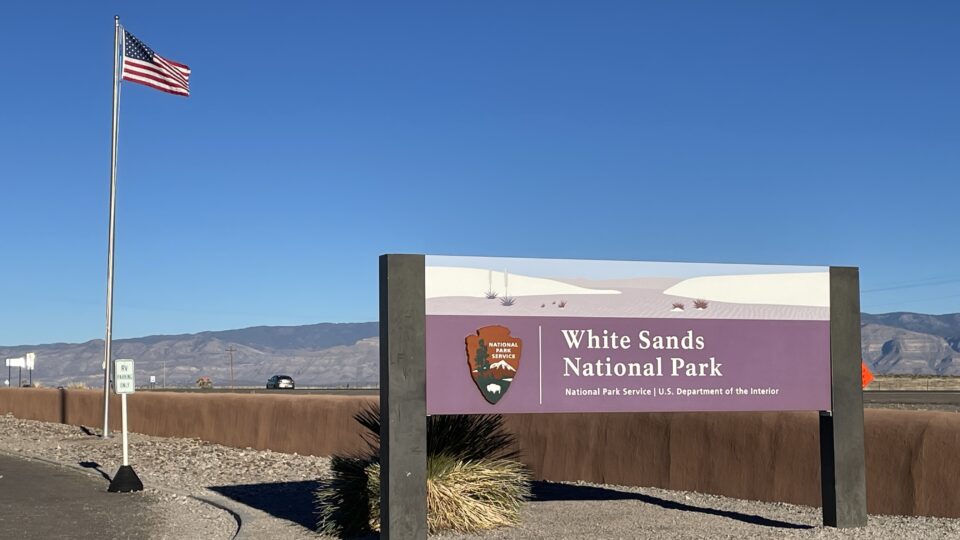
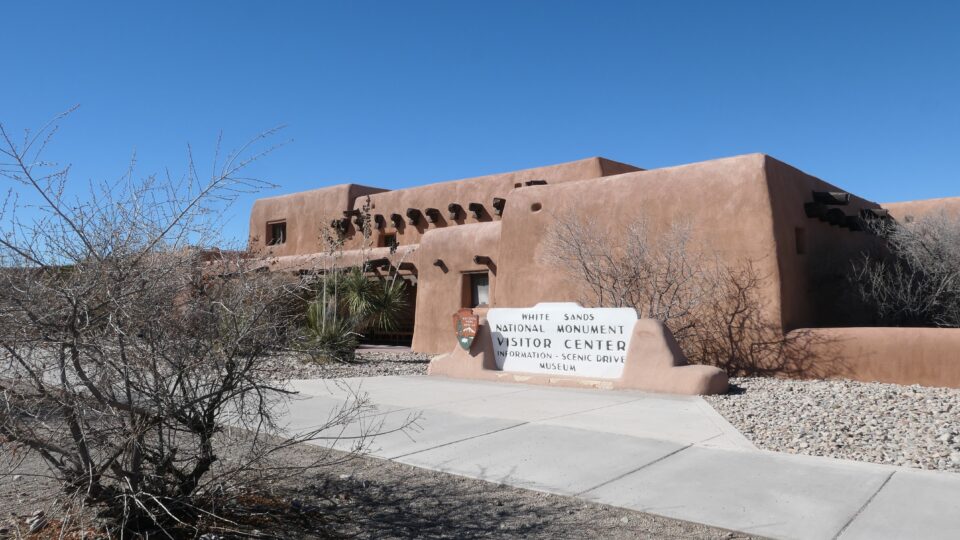
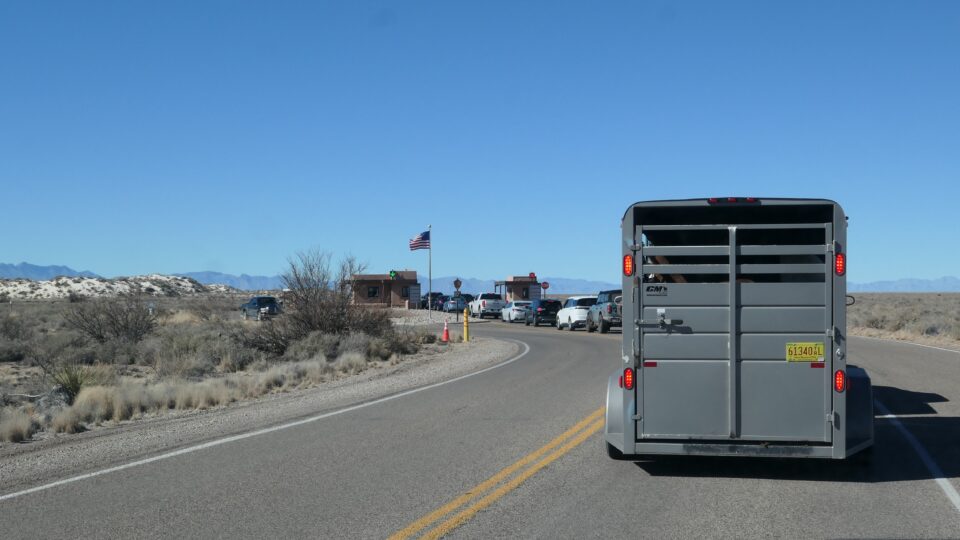
The main route through the park is an 8-mile road that meanders through the sand dunes, called the Dunes Drive. Along the way are parking areas for trailheads, picnic tables, or just plain sightseeing. Many people rent large plastic saucers from the visitor center and use them to slide down the sand dunes.
The dunes got taller the further into the park we drove. At times, you saw nothing but the white sand all around you you. Being surrounded by whiteness reminded us of the snowfalls of our childhood.
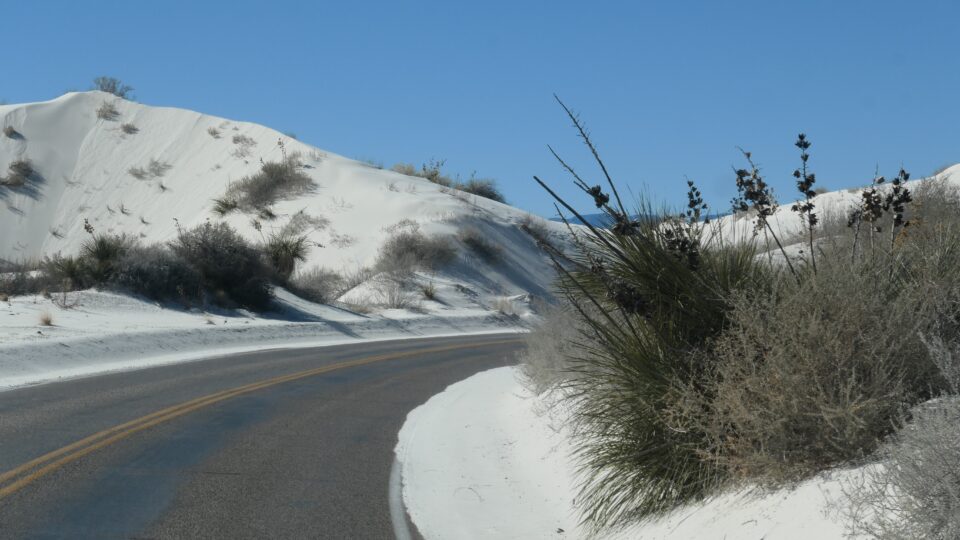
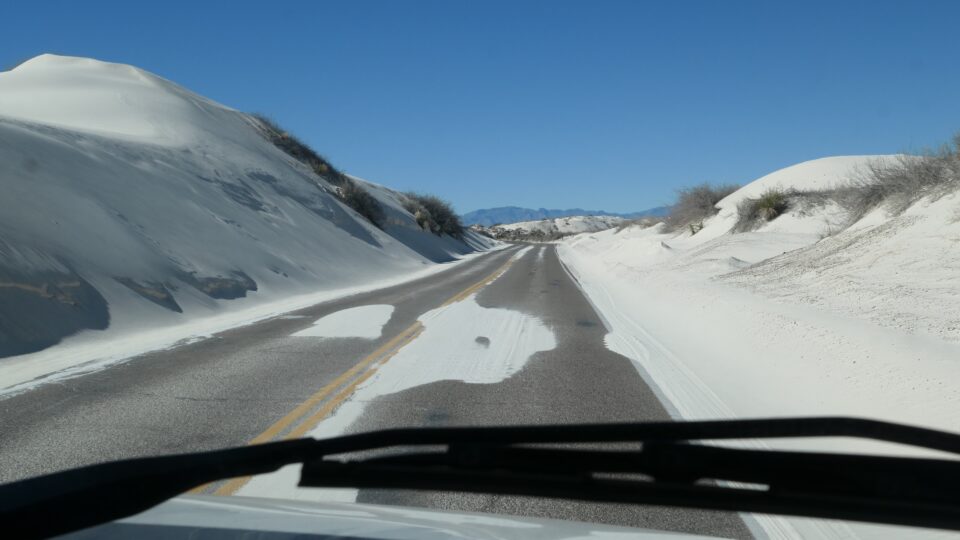
Our first destination was the Road Runner picnic area, where we had a late lunch. This was the first time we got out of the car to walk up on the dunes and found it was surprisingly easy. The white sand here is made from gypsum and it compacts into a hard surface. You do not sink into the sand like in the sand dunes of Israel, instead, you easily walk on them. We learned that this is one of the few places on earth with gypsum sand dunes.

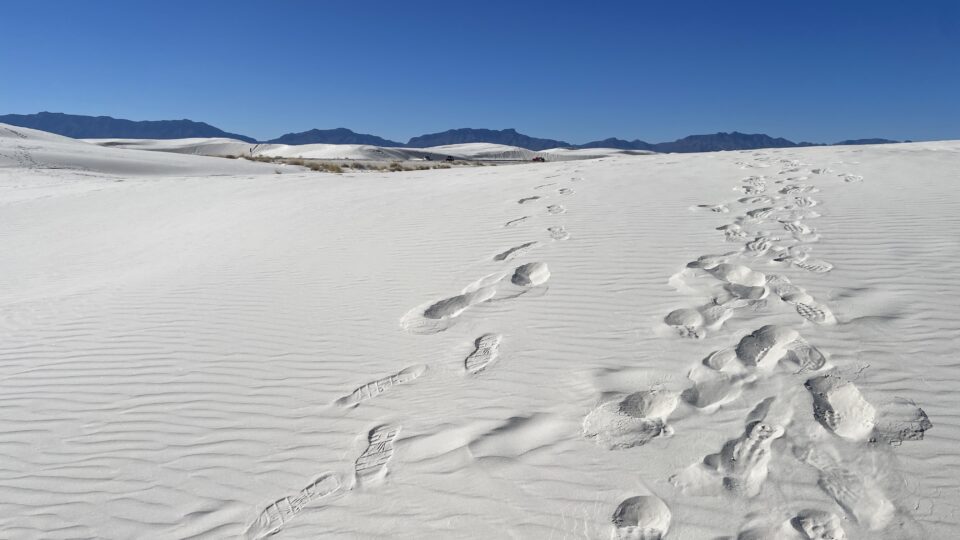
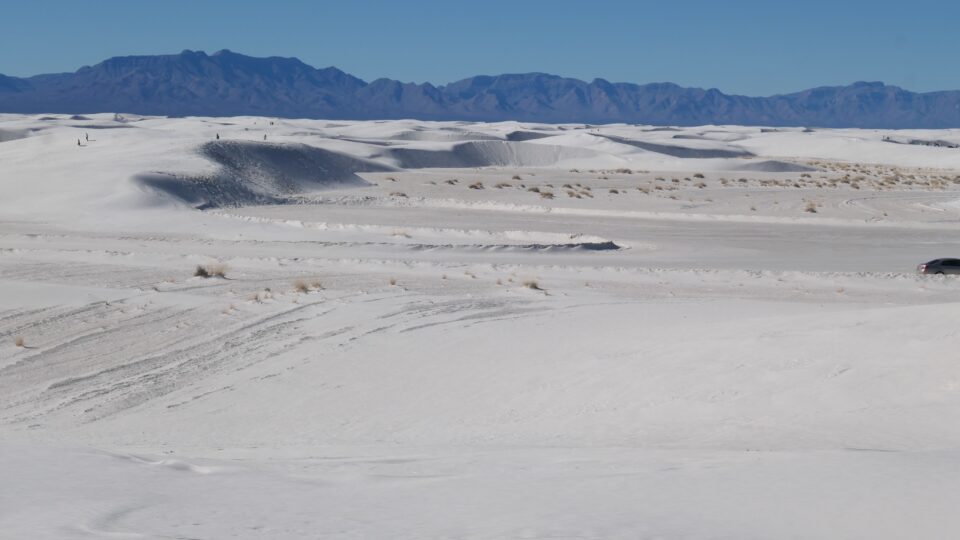
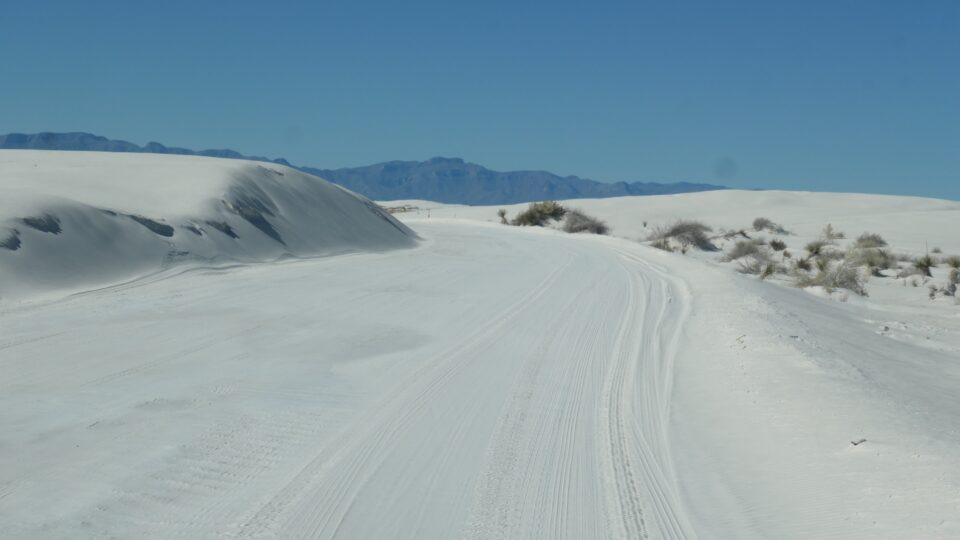
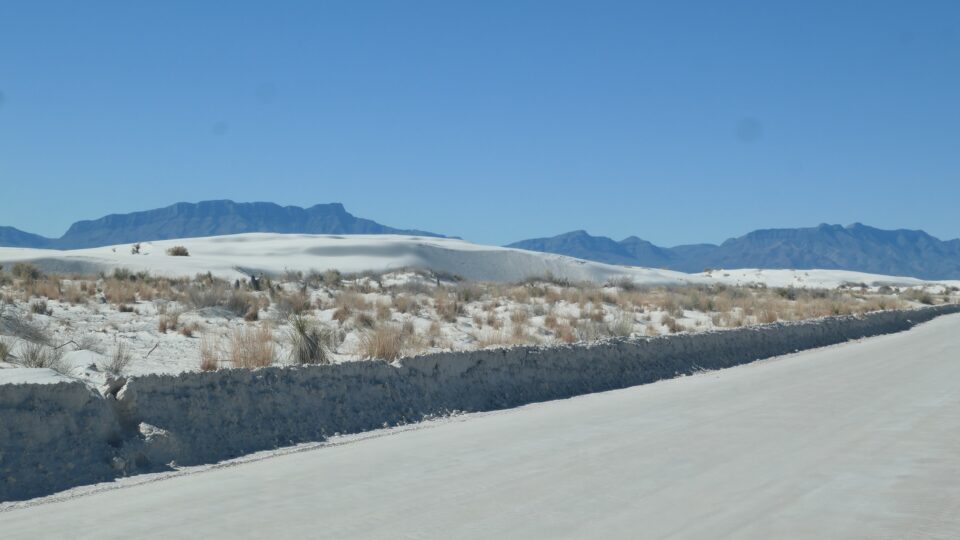
After lunch, we walked the short Interdune Boardwalk trail where an elevated boardwalk leads you over the dunes to a scenic view.
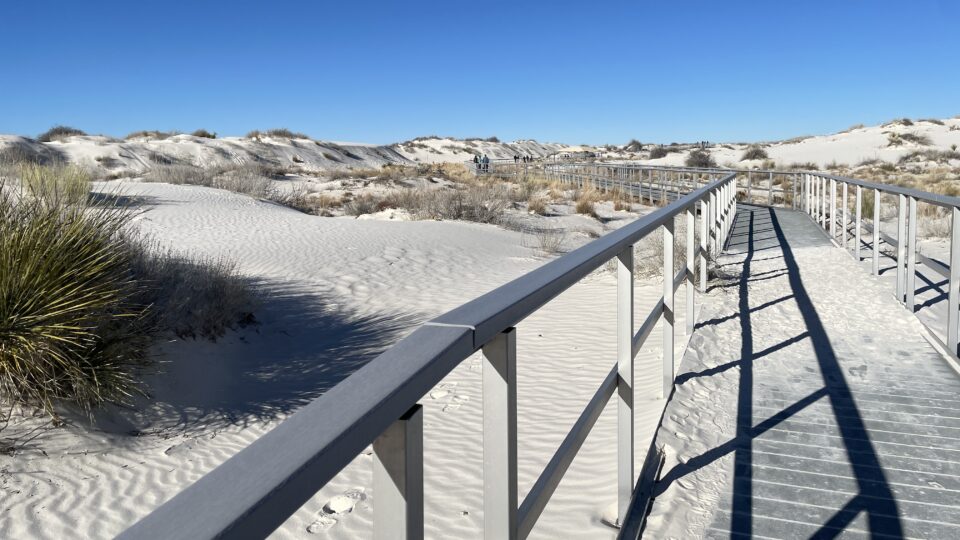
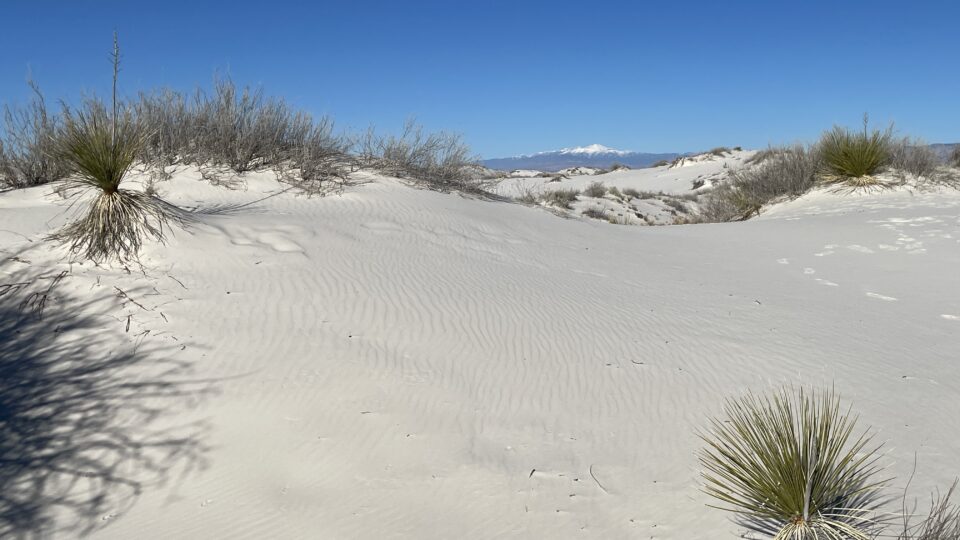
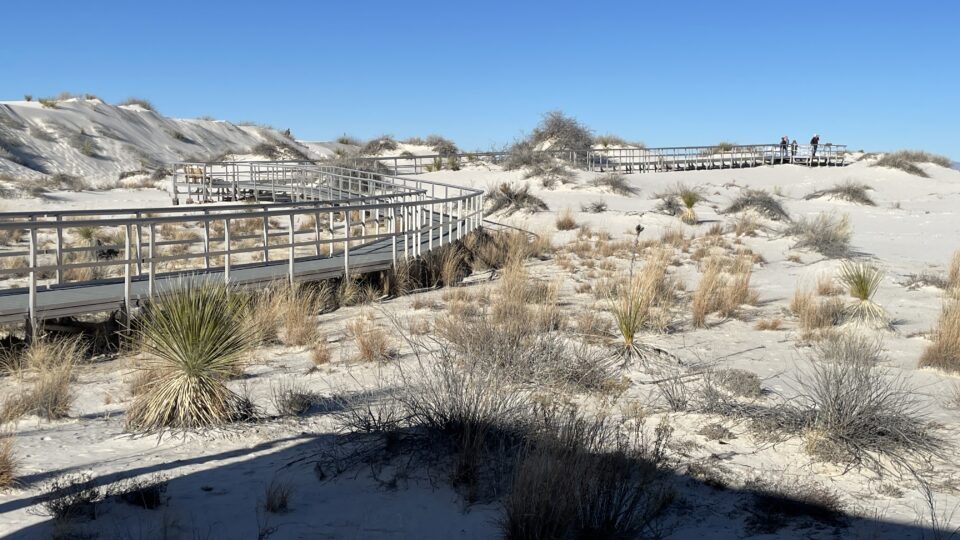
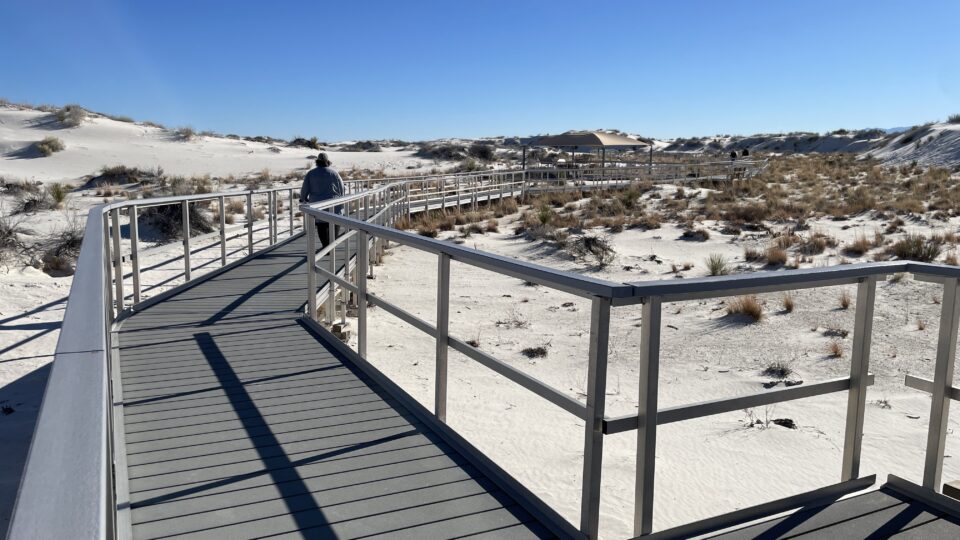
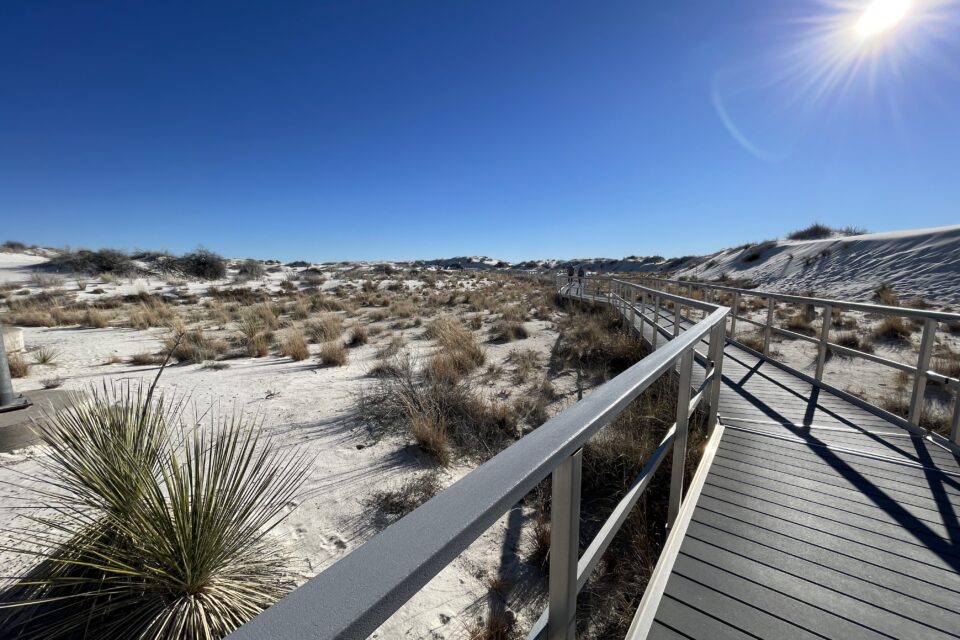
Our last walk was the Playa Trail. A playa is an area of flat, dried-up land in the desert, from which water evaporates quickly. We chose this trail because I had read that it offers the greatest chance of seeing some wildlife, but we were not so lucky.

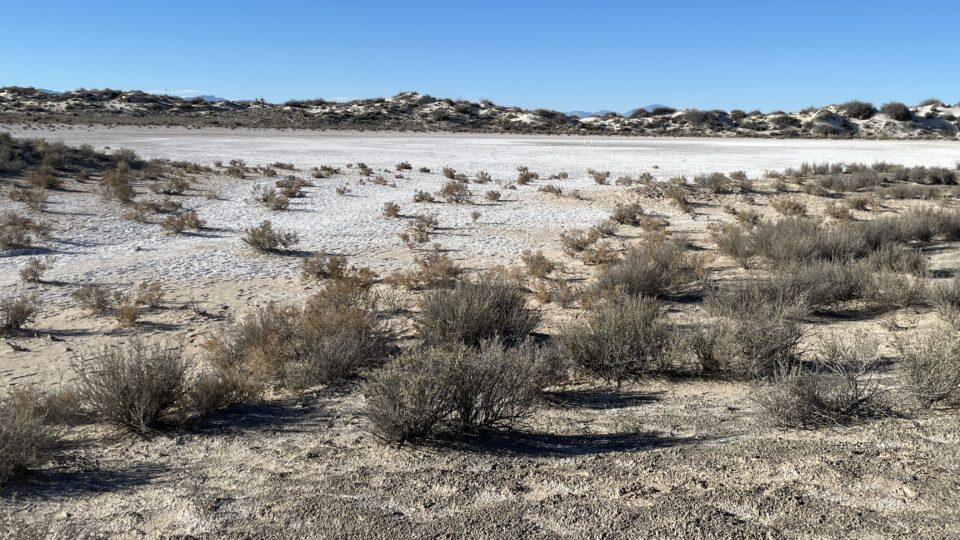
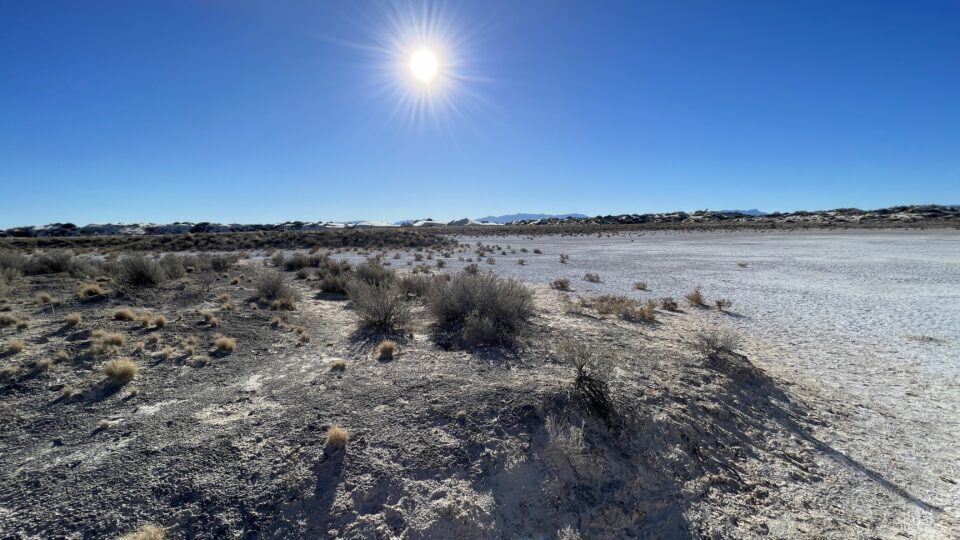
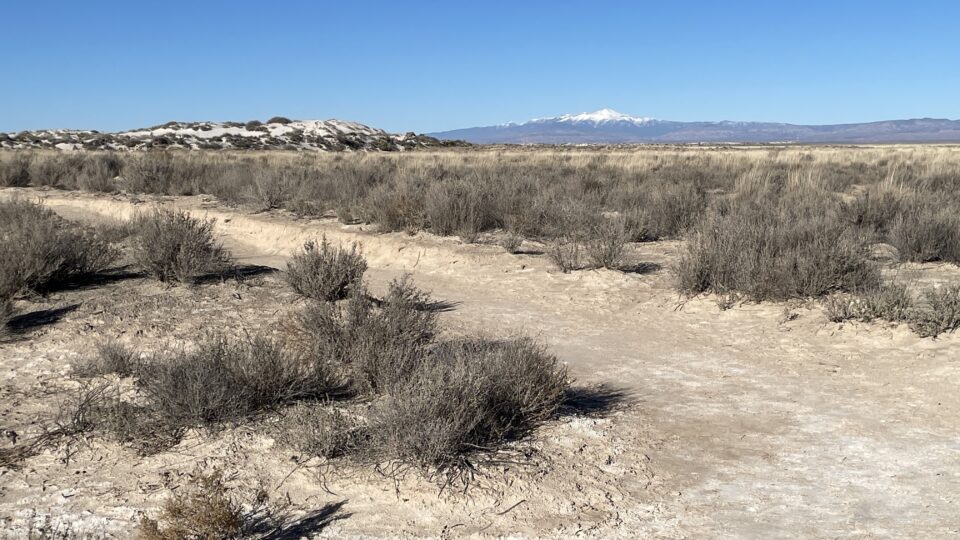
We then returned to the visitor center, just in time to watch a movie about the park. We learned two interesting things. First, we learned how the white sand dunes are formed. In the surrounding mountains, there is lots of gypsum. The monsoon rains carry it down to two lakes that appear in the winter. When these lakes dry, there are boulders of gypsum on the surface. Gypsum is very frail, and the spring winds break the gypsum into pieces. As it is carried by the wind, it tumbles and breaks into smaller pieces until it becomes the fine sand from which the dunes are formed.
We also learned, that in this park, you can see the results of evolution – many of the park animals have evolved over the years to be much lighter in color (to blend in with the white sand) than the same species that inhabits the mountains and plains nearby.
After the movie in the visitor center, it was getting late and we drove to the KOA campsite in Alamogordo, the nearest town to the park. Alamogordo was a larger town than I expected, and as we drove down the main street, it seemed like a who’s who of every fast-food chain in America – Wendy’s, McDonalds, Burger King, KFC, Taco Bell, iHop, Domino Pizza, Dunkin Donuts, Starbucks, and so on.
The KOA campsite, on the outskirts of the town was nice and we spent the evening doing laundry at the campground laundromat. The biggest treat however was that we finally, finally had a good WiFi connection. All in all, a memorable day.
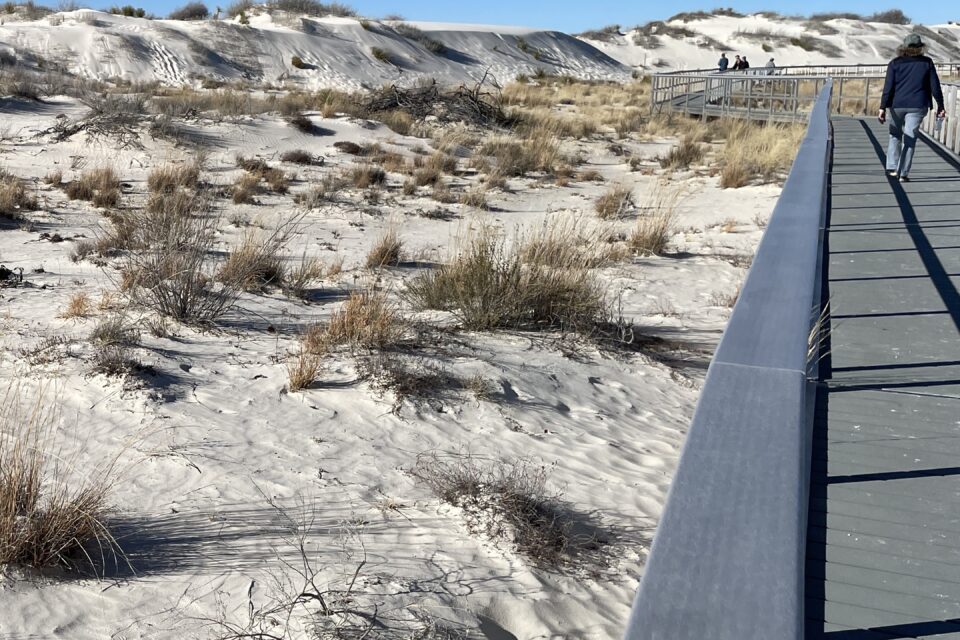
Alot done in one day!